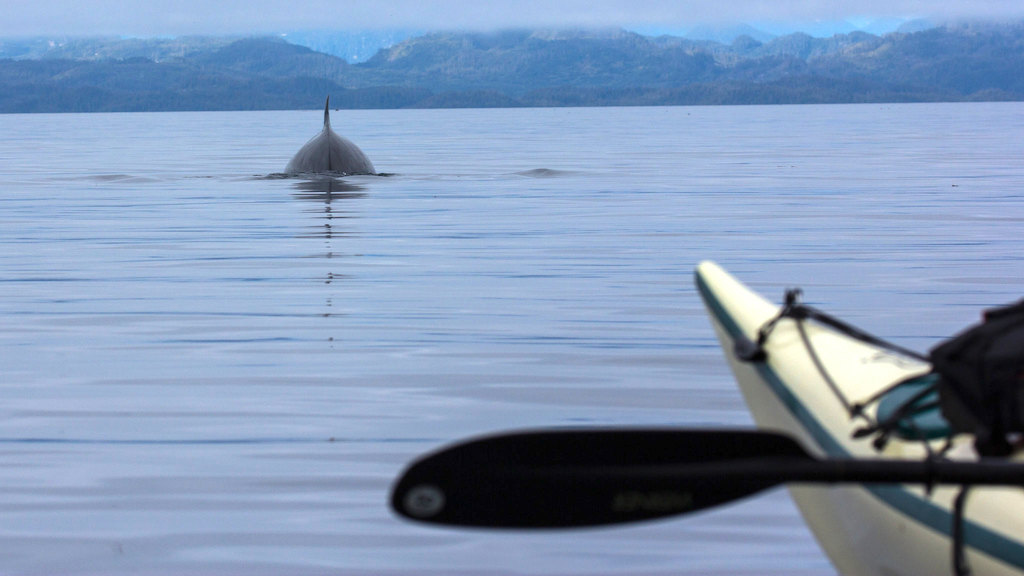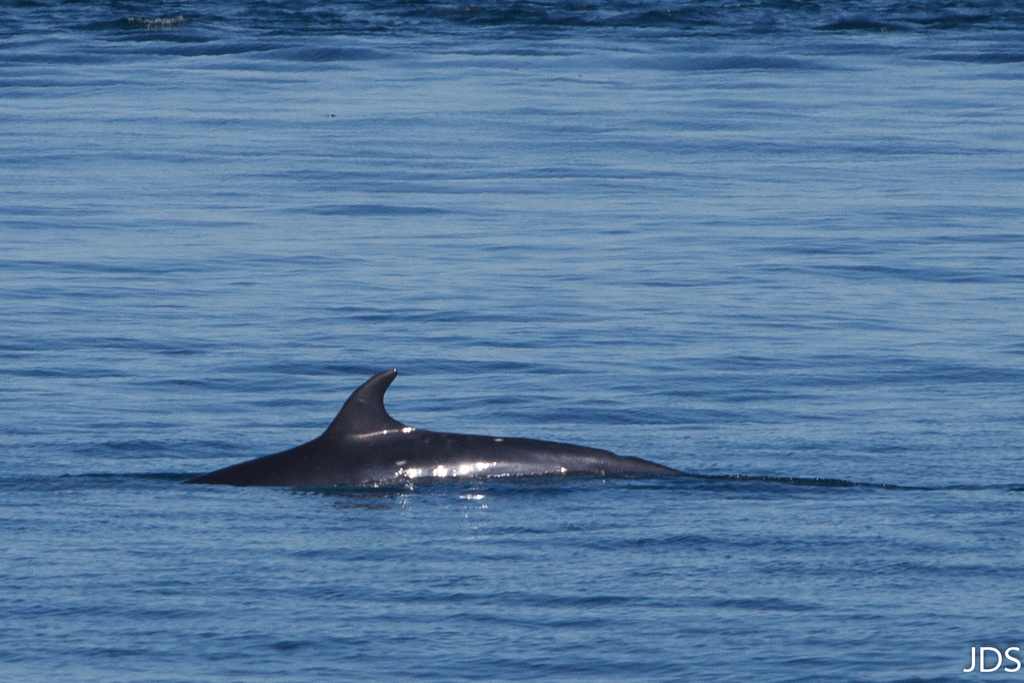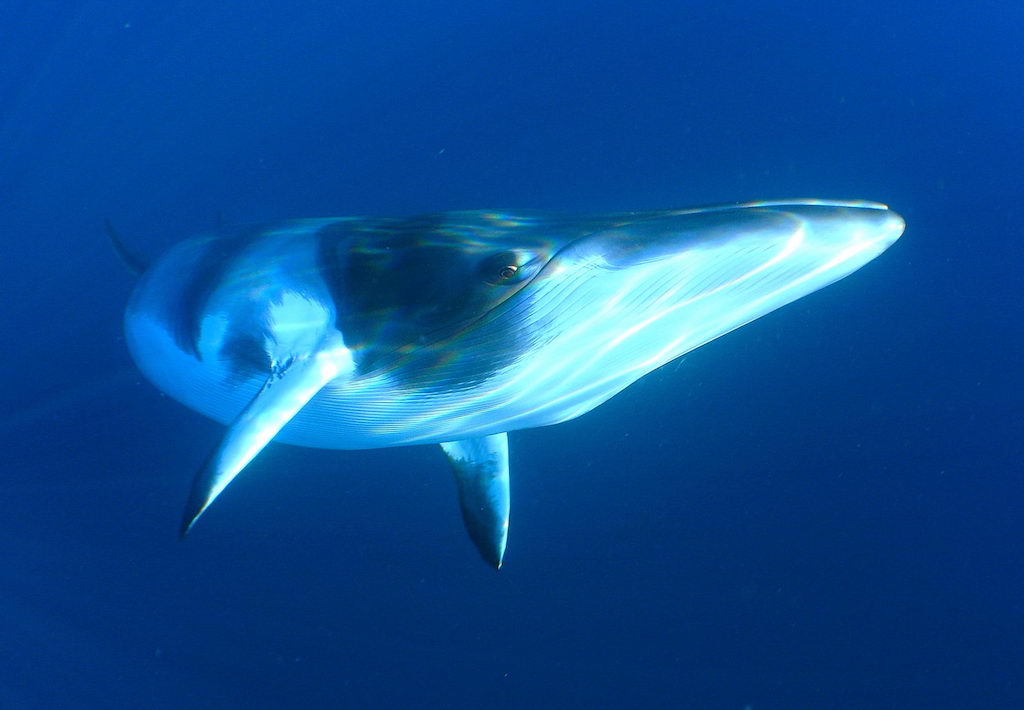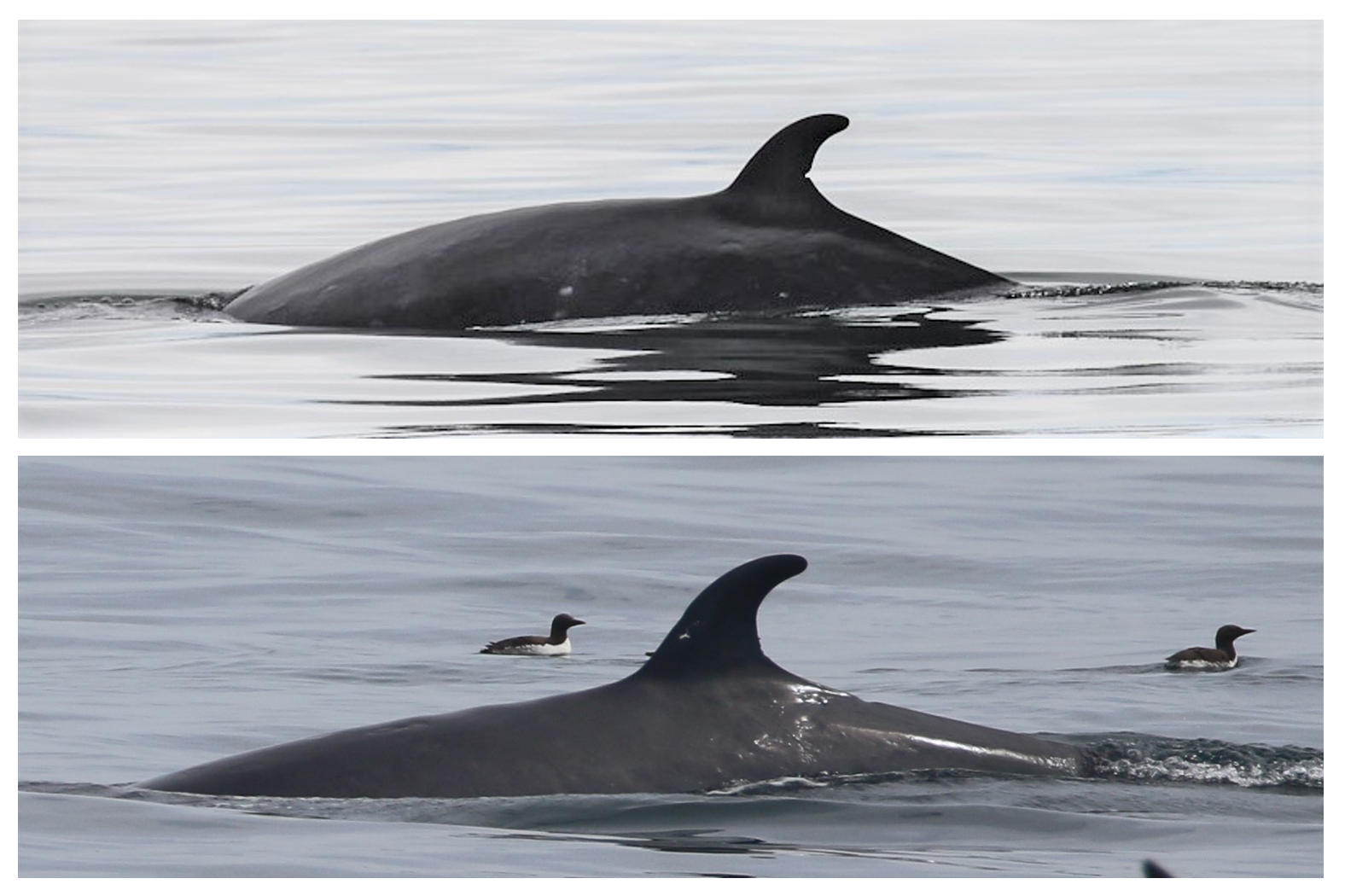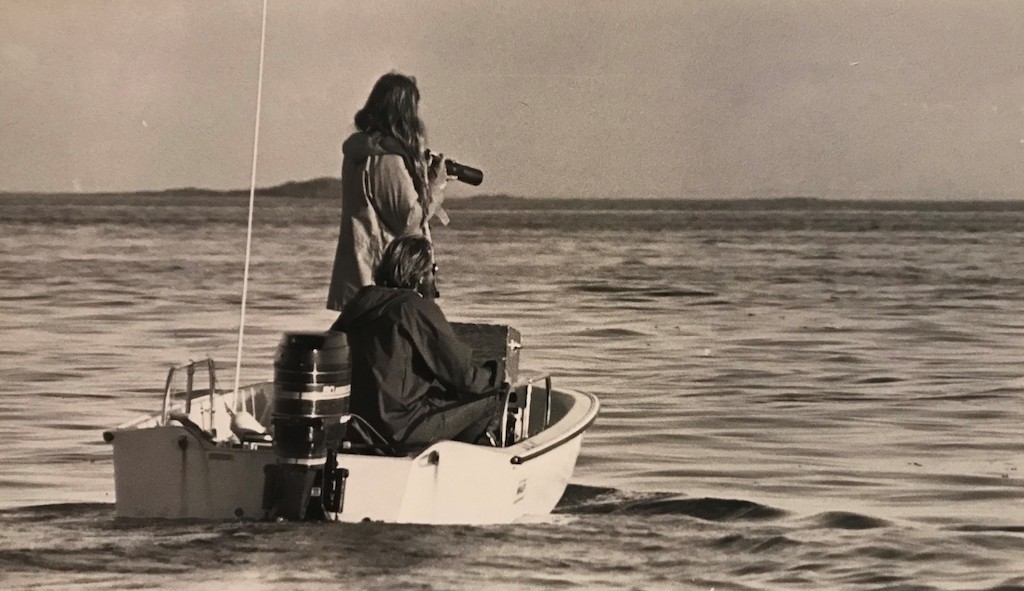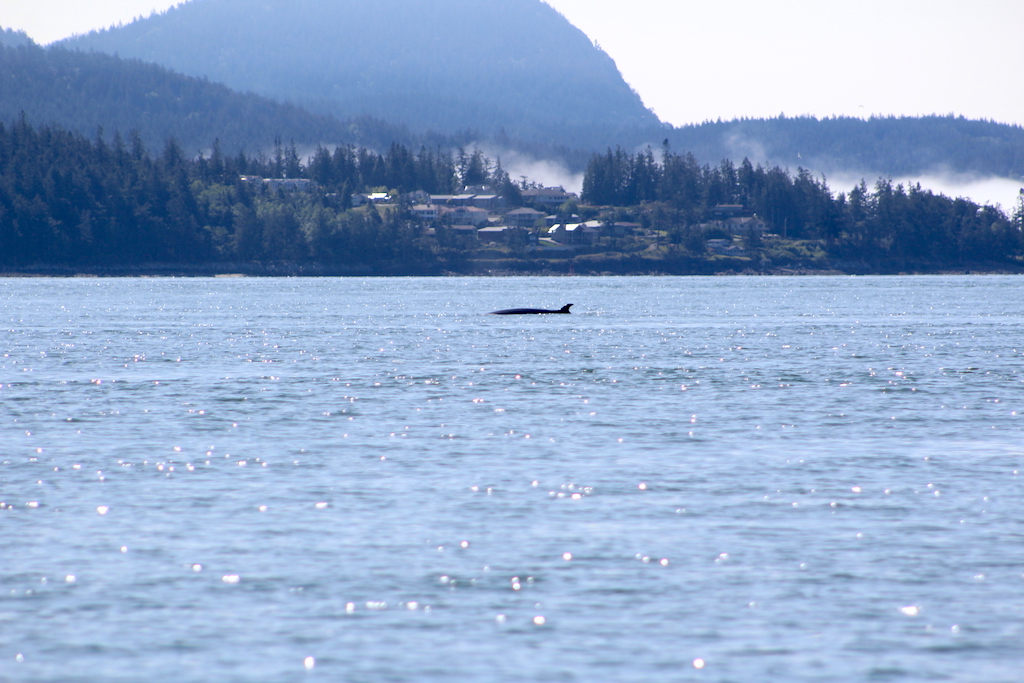Dorsey was joined that first summer by Jon Stern, a volunteer who had just finished his undergraduate degree in California. Together with another volunteer, Rus Hoelzel, they spent hours on the water, taking pictures of dark gray minke backs. Although the minkes were not as straightforward to identify as the southern residents, which have more obvious markings and colorations, Dorsey found that if she got close enough and the photos were reasonably sharp, she, Stern, and Hoelzel could tell the individuals apart by the shapes of their dorsal fins, or other subtle features. Some individuals the team got to know well, with Stern naming them after aging rock stars or actors. One male first seen in 1981, called Nick Jagger, had a notch on his dorsal fin. Al Pacino had clearly been raked by a killer whale’s teeth at some point in his life. Another with a host of scars was Johnny Rotten, until she showed up with a calf and became Chrissy Heinz. (Minkes are impossible to sex in the field, but most in the Salish Sea are females or females and calves, judging by the few regional stranding records.)
After a few years, Dorsey and then Stern had around thirty-five individuals in their minke catalog, twenty or so of which they might see in a given year. For while the minke is the most abundant of the baleen whales — biologists estimate there may be around half a million in the world—the number of minkes in the northeast Pacific is quite low. Stock assessments for the California, Oregon, and Washington coasts put the overall population in this part of the California Current at fewer than six hundred. But those minkes that Dorsey and Stern saw again and again in the Salish Sea, uncommon though they might be, constituted a resident spring and summer population. They would start to show up near the end of April or early in May and stay as late as November. After that? Perhaps they left for the open ocean, or a different part of the coast. Or perhaps some didn’t leave at all but continued to lurk. No one could say for sure.
The Minke Project
After Dorsey left the San Juans in 1988 to return to Massachusetts, where she was from, Stern and Hoelzel continued the minke project. Stern had also taken Dorsey’s protocols down to California in 1984, starting a kind of companion project around the Bay Area; he eventually became a professor at San Francisco State University, having earned his PhD from Texas A&M University.
As a researcher, Stern was focused primarily on minke feeding behaviors. Like other rorquals, minkes feed by lunging through the water and taking in tremendous quantities of it in their expanded throats. They then push the gallons out with their tongues, filtering the goodies with the strips of baleen that line their upper jaw—zooplankton, crustaceans, schools of forage fish such as sand lance or northern anchovy. But where were they going to find those sustaining hordes of zooplankton and forage fish? By following individual minkes for hours as they swam around Puget Sound, Stern was able to describe their foraging patterns, and the particular ways they optimized the number of potential food patches they could find and visit in a single day.
As the only person studying minkes in any depth in both Washington and California, Stern would become not just the leading expert on the species, but also a kind of clearing house for minke photos or stray information and anecdotes. The species might show up in quirky ways. Volunteers doing coastal surveys for gray whales in California, for instance, would call Stern to say that had seen hundreds or even thousands of minkes passing their stations in just a few days — which, Stern knew, was really probably just a one or two individual minkes going back and forth, back and forth, looking for goodies in the lines of kelp close to the shore.


